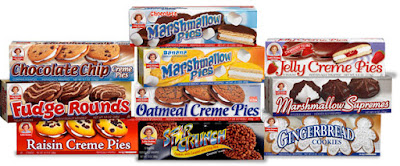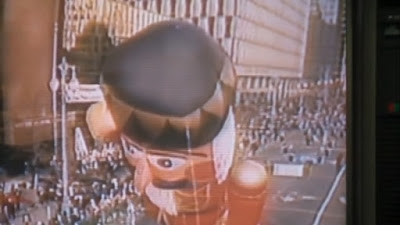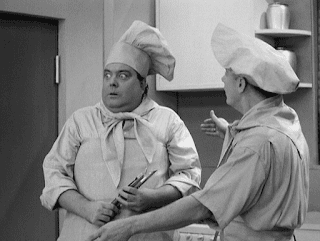"I'm Tom Bodett, and we'll leave the light on for you."
I'm sure you've heard that before, especially those of us born before the Y2K "virus" was going to ruin every computer on the planet. Even people who don't travel often can likely say they know that the aforementioned slogan is from a series of very popular commercials during the 80s and 90s for Motel 6. The campaign was so popular that in 1996 it won a CLIO Award, the advertising industry's highest honor.
Just the phrase "we'll leave the light on for you" creates an image of safety and comfort. It creates a nostalgic tie to when we were younger, and our parents or loved ones left the front porch light on for us when we came home late at night. Perhaps it reminds you of a long hard day of traveling, and when you finally reach home, the lights are on welcoming you back.
In this case, you weren't home. You're at a roadside motel that has probably seen better days.
I can't honestly say if I've ever stayed in a Motel 6 before or not. Perhaps I did once when I was very young at a cousin's wedding in Syracuse, New York. I remember only snippets of it, and I must have been 4 or 5. The only thing I really remember about the hotel was the stories family would tell in the morning about a disruption in the middle of the night that was similar to a shooting, stabbing, or one that involved the police anyway, at the very least. I slept through the whole thing, as I did with most things as a kid. These days, trying to sleep through any noise is a different story.
Not exactly the comforting image of home leaving the lights on for you, but I digress...
In my line of work, we stay in hotels quite a lot. I don't spend as many nights away from home as I used to, but I did the math and figured that I spent an average of 18 nights a month in a hotel for over a decade. That's somewhere around 215 nights per year! For many years, I used to sleep better in a hotel bed than in my own, but now that I'm out of practice, I often sleep terribly in a hotel bed.
These days, I'm lucky if I only have to spend two or three nights away from home per month. I'm no expert, but I'd say that I'm still an aficionado of what works (and what doesn't) in a hotel.
Every time I stand in the lobby waiting for my coworkers to check in with the company sign-in sheet, I often have the soft, happy tones of the Motel 6 theme song playing in my head. The soothing voice of Tom Bodett appears in my head as I walk towards my room, and as the door closes behind me, I'll often say to myself, "We'll leave the light on for you!"
Join me as we take a deep dive into YesterYear as we look back at Motel 6 and its iconic advertising campaign!
Motel 6 was created in Santa Barbara, California, in 1962, by two building contractors named William Becker and Paul Greene. The business partners developed a plan to build motels across the country with very low-cost rates.
Becker and Greene originally intended on only $4 per night per room, but after several budget discussions, they decided to charge $6 per night (equivalent to $55 in 2021) instead. The $6 per night was figured to cover the cost of running the business, including items like land leases, housekeeping supplies, and employee salaries.
 |
| The first Motel 6, located in Santa Barbara, California |
The low original room rate of $6 is the reason behind the name "Motel 6." Obviously, today, the rates are much higher than $6, or even the modern equivalent, but it harkens back to the company's roots.
The original desire was to create a budget alternative to major hotel chains. Companies like Holiday Inn or Howard Johnson's started out as budget motels but increasingly became upscale in both room quality and cost.
After two years spent creating the business model where all possible costs were removed, the chain launched, emphasizing itself as "no-frills," and they meant it. The rooms featured coin-operated black-and-white television sets, at 25 cents for six hours, instead of more expensive color televisions found in other motels. Each hotel had a bank of payphones in the lobby for guests to use as phones were not included in the room. A functional decor was used to reduce cleaning times as well as extend the life of the furniture. There was no dresser or desk in the room to clean or fix any damage. The room was also designed without a closet, just a bar and shelf, and a shower stall with rounded corners to reduce cleaning times. The sheets were heavily starched and did not require ironing by the housekeeping staff. The bed frames were built flush to the floor, so there was no need to clean underneath them. Even the drinking glasses were replaced with disposable styrofoam cups.
In 1965, Motel 6 opened its 15th property, and the first outside of California, in Salt Lake City, Utah. Becker and Greene created an ambitious expansion plan that saw the business opening its 25th location just a year later in Gilroy, California.
During those days, the motel reported an 85% occupancy rate, well above average for the hotel industry, and a sign of their rapid success. Eventually, other chains began imitating the Motel 6 concept.
Due to this success, in 1968, Becker and Greene sold the company to an investment group for $14 million, or $109 million in today's money. They had grown the company to 180 locations when the investment firm, later named Motel 6, LP, purchased the chain.
 |
| Motel 6 Tropicana in Las Vegas, Nevada |
The new investment firm took a gamble, pun intended, in the early 1970s by opening its largest location to date in Las Vegas, Nevada, called "Motel 6 Tropicana." Located just off the strip on Tropicana Blvd, directly across from the MGM Grand Casino, "Motel 6 Tropicana" was designed for the budget tourist, within walking distance to casinos, restaurants, and more.
That same year, 1972, the company headed cross-country, opening its first location in the east in Fort Lauderdale, Florida. By 1980, the chain was up to 300 locations.
The chain, a financial success, was then sold to another firm named Kohlberg, Kravis, and Roberts in 1985. The investment firm immediately brought many changes to the brand, the first being the end to the "nationwide rate." The nationwide rate, famously only $6 at first, had ballooned to $18 over the years. Unfortunately, a nationwide rate hindered the company's success because the rate that works in, say, Cedar Rapids, Iowa, does not work in New York City. The low rate prevented them from entering certain markets, and when they did, rates would go up everywhere. The new owners did away with the nationwide rate and went to a market-specific one.
The company headquarters was also promptly moved from Santa Barbara to Dallas, Texas. This investment firm decided to move the chain away from its "no-frills" approach and started including some modest amenities like color television and telephones in each room.
They immediately sought to increase market share by purchasing rival budget hotel chains throughout the US. In the Western part of the United States, they bought out "Sixpence Inn." In the Mid-West and Mid-Atlantic, the firm purchased "Envoy Inn" (the former Bargain-Tel.)
By far, the most important change brought about by the company's new management was a major marketing push, the first-ever put forth in Motel 6's history. Kohlberg, Kravis, and Roberts are also responsible for the iconic ad campaign featuring Tom Bodett. In November of 1986, the company, which had previously only advertised by word of mouth or highway billboard, decided to spend $6 million in a nationwide ad campaign featuring the plain-talking, soft-spoken Tom Bodett. Bodett read letters from "satisfied guests" in the original ad campaign and invited the listener to give Motel 6 a try.
The ads featured a happy little tune composed and performed on guitar by Tom Faulkner with Milo Deering on a fiddle. I often wonder what's more memorable: Tom Bodett or the background music?
In 1986, Tom Bodett was building houses in Homer, Alaska, and contributing to NPR's "All Things Considered" program, where an agent from the Richards Group Ad Agency heard his voice. They invited Tom to read for the Motel 6 commercial, and Bodett ad-libbed the famous line "We'll leave the light on for you" during the very first recording session. It was an instant hit, and he's been the chain's only spokesman ever since.
The original ad's director David Fowler once said he hired Tom because he "sounded like the kind of person who stayed at a Motel 6." The campaign worked wonders and is in large part responsible for reversing a five-year decline in occupancy. By the following year, room occupancy was up 6%.
The campaign was so popular that it won a Clio Award in 1996. The Clio Awards are the advertising industry's version of The Oscars. Advertising Age magazine selected it as one of the Top 100 Advertising Campaigns of all time.
Growing up, the best part of any of our family vacations was the plane ride and the hotel. I have always loved little roadside motels, like a Motel 6, and one of my wild fantasy dreams is to retire from the airline business and run a little 12 or 15 unit roadside motel similar to what you'd expect to see on Route 66. Hearing the sweet, soothing sounds of the fiddle and bass guitar, along with Tom Bodett's calming voice, has always struck a chord with me that tickled my wanderlust bone.
It's something pure Americana about it. Cars, highways, travel, and roadside motels. It conjures up images of adventure and journey and having a comfortable little place to stay for the night before continuing on my way.
In 1990, French-based hotelier "Accor" purchased the Motel 6 brand for $1.6 billion, acquiring the chain's 554 motels. A year later, they completed the purchase of the no-frills budget motel chain "Regal 8."
During 1993, the company reported a loss of $40 million due to a suffering American economy, an industry downturn, and a severe bout of negative publicity related to an incident at a Fort Worth, Texas location. Consumer perception quickly turned on the brand, with many feeling it had become a slum motel that was not safe for travelers. Accor responded by selling off nearly 100 locations that they thought to be problematic in "bad neighborhoods" and increased security at each of its motels with the latest room lock and security camera technology.
By 1994, with an aim to reach a wider market, Accor began quickly expanding outside of its core operation in the Western United States through franchising. Until then, Motel 6 had directly owned and operated the vast majority of its locations. Accor management took over motels franchised by other chains and began converting them all to Motel 6 branding. They took this opportunity to renovate all bedrooms, upgrade door locks, other security features, and basic guest amenities. They sold off under-performing locations and acquired newer properties with interior corridors, another safety feature they used in advertisements.
Accor hotels, along with trusty spokesman Tom Bodett, launched a new ad campaign for the "Motel of the 21st Century" that showcased the new buildings with interior corridors, new data port connections in every room, a computerized front desk and office system, swimming pools, and modern security features.
In 1999, Accor and Motel 6 launched "Studio 6," an extended stay motel with suites designed for longer stays. These rooms featured a living area and kitchenette intended to target the business traveler on a several week-long trip or a customer transitioning between living arrangements.
In 2008, Motel 6 and Accor launched a company-wide renovation project named the "Phoenix Project." This would upgrade and update the appearance of all bedrooms. Before the remodel, most rooms had a colorful road-trip-inspired decor, including bed covers, carpeted floors, and shower curtains. The television sets were often the old tube-box style sets with bland faux-wood furniture.
 |
| A standard Motel 6 room in the 90s |
The remodel was designed to modernize rooms and provide a means to keep room rates low in the future through efficiency. Motel 6 accomplished this by making the rooms more energy-efficient and easier to clean. Easily stained carpets were removed in exchange for easily-cleaned laminate style flooring, and furniture was again paired down to the functional essentials. The bedspreads were updated to a clean-looking, and modern while the often-stained or dirty cloth shower curtains were removed in exchange for plastic.
 |
| The "Phoenix" Prototype |
During this renovation, Motel 6 began using Tom Bodett's recorded voice for their wake-up calls. The brand felt that a familiar voice early in the morning would provide a happy, personal touch to start the customer's day off right.
This renovation attracted new business, along with interest from big investment firms. In 2012, the Blackstone Group purchased Motel 6 from Accor for $1.9 billion. The Blackstone Group, who then also owned a majority stake in Hilton Hotels, reorganized Motel 6 and Studio 6 under a new holding company named "G6 Hospitality."
2012 marked the chain's 50th Anniversary, and it used the slogan "50 Years, The Light's Still On" in reference to the company's popular commercials of the 1980s and 90s featuring Tom Bodett.
For nearly 60 years, the basic philosophy of Motel 6 was to provide a clean room and a pleasant experience at the lowest price of any national chain. Sadly, in 2021, perhaps often undeservedly so, Motel 6 has a reputation for run-down motels in bad parts of town with a clientele that a family wouldn't want to associate with. However, the chain still strives to meet the budget-conscious customer's needs while providing a safe, clean room for the night. Today, the Blackstone-run Motel 6 offers rooms with basic amenities, along with free wireless internet and large flat-screen televisions, a far cry from what the original motel in 1962 looked like.
In 2015, a new marketing campaign that featured Bodett's voice was launched nationwide on television and radio. It touted the major investment in Motel 6's properties and the renovation of guest rooms and public spaces. They currently have over 1,400 locations throughout the United States and Canada.







.png)




Comments